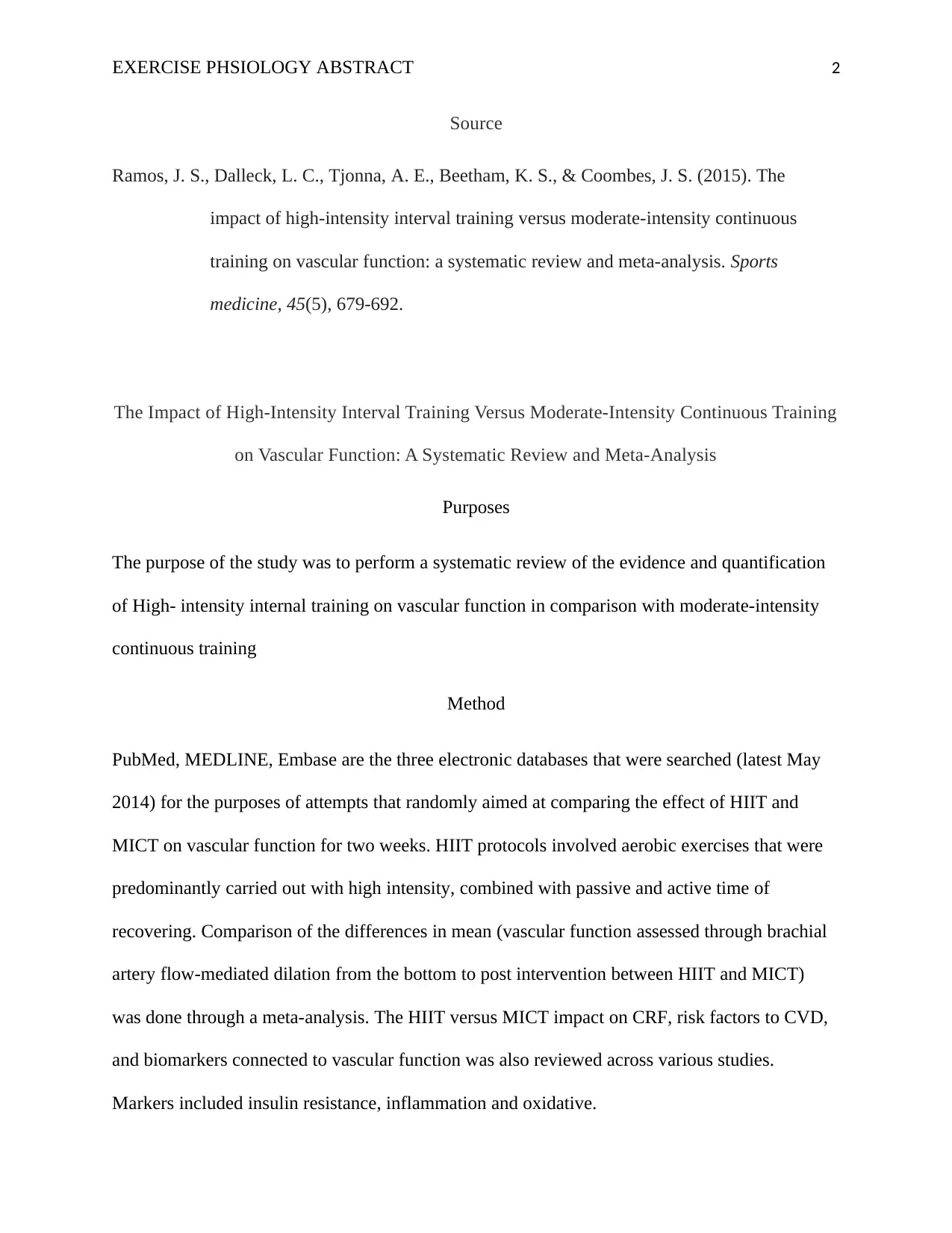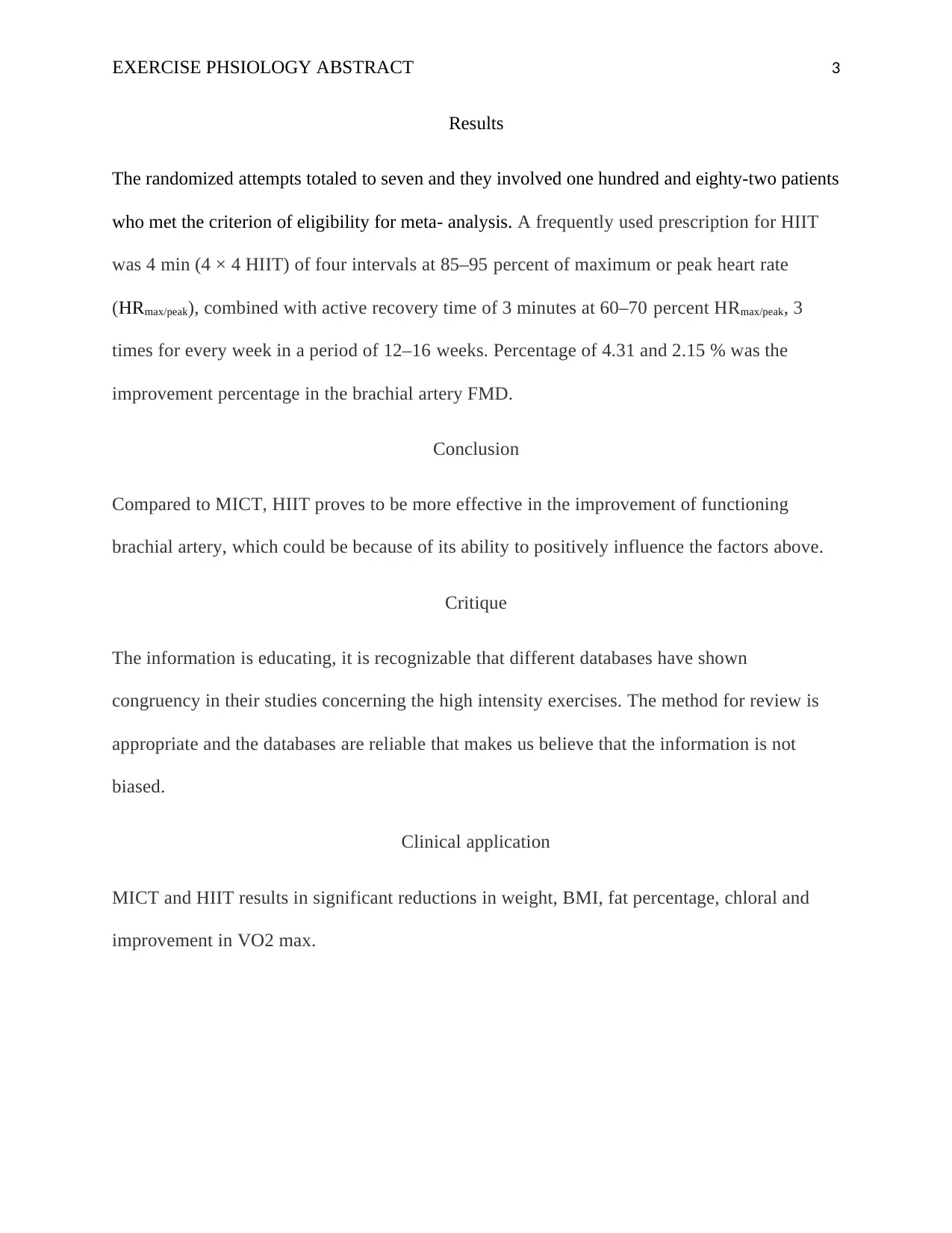Exercise Physiology Abstract: Vascular Function Study
VerifiedAdded on 2022/10/18
|4
|462
|19
Report
AI Summary
This report presents an abstract from an exercise physiology study comparing high-intensity interval training (HIIT) with moderate-intensity continuous training (MICT) on vascular function. The study, a systematic review and meta-analysis, examined the effects of HIIT and MICT on brachial artery flow-mediated dilation. The researchers searched PubMed, MEDLINE, and Embase databases and analyzed seven randomized trials involving 182 patients. The results indicated that HIIT was more effective than MICT in improving brachial artery function. The abstract details the methods, including the HIIT protocols and the meta-analysis approach. It also includes a critique of the study and discusses the clinical applications of the findings, such as the potential of HIIT to positively influence factors related to vascular health. The study concludes that HIIT offers significant benefits for vascular function compared to MICT.
1 out of 4






![[object Object]](/_next/static/media/star-bottom.7253800d.svg)